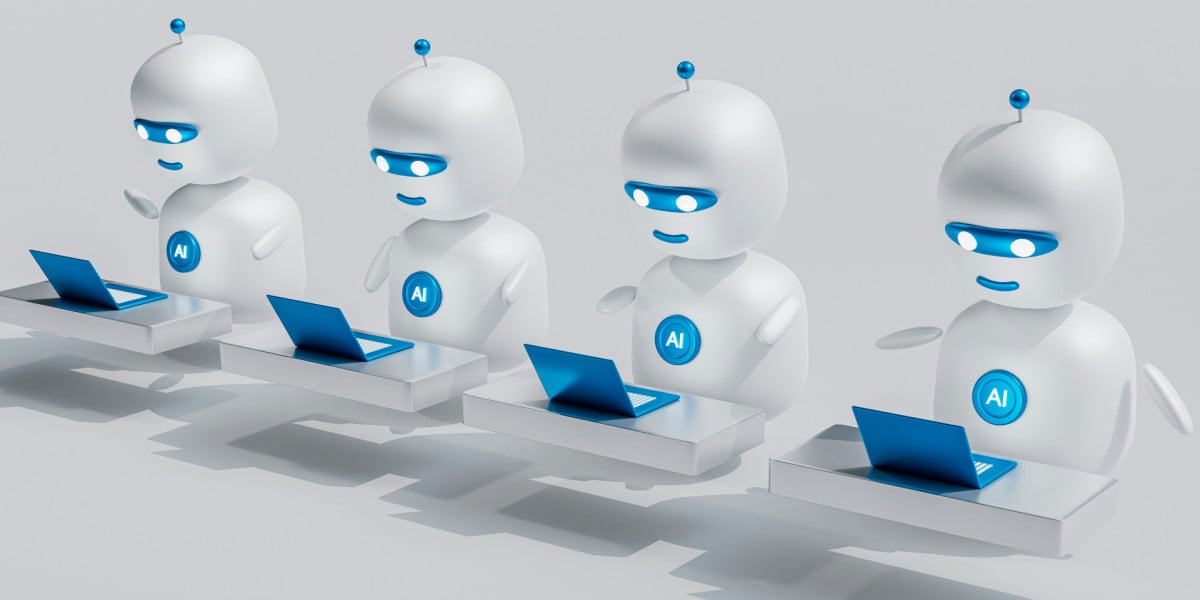
OfS consultation on the future approach to quality regulation: Response from the Chartered ABS
The Chartered ABS has submitted its response to the OfS’ consultation on the future approach to quality regulation based on feedback from our learning and teaching community.
AI in Higher Education: From detection to development

Authors

Dr Farrah Arif
Senior Lecturer (Associate Professor), School of Business and Management, QMUL
Dr Farrah Arif, Senior Lecturer, School of Business and Management, Queen Mary University of London, reflects on recent developments being made with AI-integrated education in HE and its impact on educators and students in business schools, including the concerns around inclusivity and perceptions.
Traditional education models have long emphasised rote memorisation and rigid assessment structures that prioritise the detection of plagiarism over the intellectual and personal development of students. This has often resulted in a system where, as educators, we spend more time policing academic dishonesty rather than fostering an environment that encourages critical thinking and creative problem-solving. However, as we evolve, it raises an essential question: What is the true purpose of education? Should we not be cultivating independent, analytical thinkers capable of applying their knowledge innovatively rather than merely recalling information?
A progressive approach to education would promote an environment where students are encouraged to explore, innovate, and develop skills essential for navigating an ever-changing world. Artificial Intelligence (AI) has become an undeniable part of this evolving ecosystem, shaping how students engage with learning materials and how educators approach teaching methodologies. AI is not just a passing trend but a transformative force that can redefine the way knowledge is acquired, processed, and applied in academic settings.
The growing presence of AI in Higher Education
AI’s presence in higher education is growing at an exponential rate. Whether institutions acknowledge it or not, students are already integrating AI into their academic work. A recent study found that nine out of ten undergraduate students in the UK use AI for assessments in some capacity. Yet, only three out of ten believe that their institution has actively encouraged them to use AI. This reveals a significant disconnect between student expectations and university policies.
For years, universities have relied on AI tools like Turnitin, designed primarily to detect plagiarism. While effective for maintaining academic integrity, such tools do little to support developmental learning. Their main function is to highlight similarities in work rather than provide meaningful feedback that helps students refine their writing and enhance critical thinking skills. This raises an important question: Should AI only serve as a policing tool, or can it also be leveraged as a developmental aid?
Universities leading the way
Recognising the need to move beyond AI as a mere detection tool, some universities have begun taking significant steps toward incorporating AI into their educational frameworks. The University of Oxford, in collaboration with OpenAI (the creator of ChatGPT), is exploring ways to integrate AI into education and research. Oxford has also permitted students to use generative AI tools to develop academic skills that support their studies. This is a major shift from previous resistance to AI in academia, signalling a new era where AI is embraced rather than feared.
Similarly, Queen Mary University of London’s School of Business and Management has implemented an AI policy that allows faculty members to incorporate AI into their teaching modules based on student needs. For example, students can use AI to brainstorm ideas and generate initial solutions before conducting their own in-depth analysis using theoretical frameworks covered in class. This approach ensures that AI is not simply an automation tool but a means to enhance critical thinking and creativity. Students are also encouraged to disclose their use of AI, promoting transparency and accountability.
These initiatives set a strong precedent for other universities. The goal should be to foster an academic ecosystem where students feel empowered to use AI as a tool for learning rather than fearing its consequences. AI exposure in a structured, transparent manner prepares students for the real world, where AI-driven solutions are becoming the norm.
AI for educators: A game changer
While AI’s potential benefits for students are widely discussed, a crucial missing link is the role AI can play in supporting educators. AI-powered learning management systems could revolutionise course creation, allowing faculty members to:
Generate course summaries, exams, and quizzes within seconds.
Translate academic content into multiple languages for diverse student cohorts.
Develop entire courses using AI-assisted curriculum planning tools.
Personalise student assessments based on performance analytics.
Create AI-powered scenario-based assessments that test comprehension rather than memorisation.
Provide instant plagiarism detection with deeper insights into originality, ensuring that students understand how to properly attribute sources.
Generate lesson plans that align with students’ learning paces and difficulties, allowing for differentiated instruction.
By leveraging AI, educators could shift their focus from repetitive administrative tasks to fostering deeper learning experiences. AI-powered tools could tailor assessments to evaluate not just knowledge retention but also critical thinking and problem-solving abilities. With AI-driven insights, educators could also track student progress in real-time, identifying struggling students early and providing targeted interventions.
Integration of AI: The issue of inclusivity
Over the past two years, I have taught subjects such as Digital Marketing at two different universities in the UK. One common observation across both institutions was the use of AI by students. Some students became highly proficient with AI and integrated it into their learning processes in thoughtful and innovative ways. They used AI as a tool for brainstorming, idea generation, and even for creating mock-ups of digital campaigns for their coursework.
However, a significant concern remains: the lack of formal integration of AI tools - particularly Generative AI like ChatGPT - into the learning management systems (LMS). As a result, students are uncertain about whether using such tools is permitted, which creates anxiety and hesitation.
More troubling is the issue of inclusivity. Some students use the paid version of these AI tools, which offer more advanced features and produce better outputs. This disparity challenges the principle of inclusive education and raises questions about fairness in academic performance and assessment.
The future of AI-integrated education
The path forward is clear: AI should not be feared but harnessed thoughtfully. By balancing innovation with ethics, we can create an education system that equips students with the skills needed to navigate an AI-driven world responsibly. Higher education stands at a crossroads, will institutions seize this opportunity to transform learning, or will they be left behind? The choice is ours.
References
Nine in 10 UK undergraduates now using AI in assessments | Times Higher Education
Oxford and OpenAI launch collaboration to advance research and education | University of Oxford
Use of generative AI tools to support learning | University of Oxford
